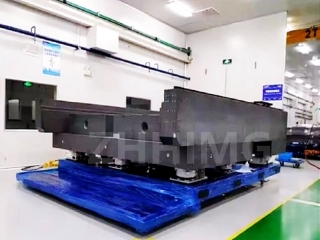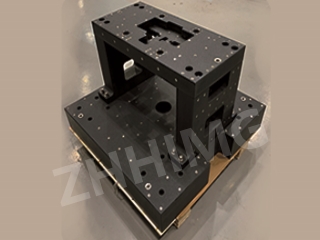Under normal circumstances, the density of granite does not change significantly over time, but under certain specific conditions, it may alter. The following is an analysis from different aspects:
Under normal circumstances, the density is stable
Granite is an igneous rock composed of minerals such as feldspar, quartz and mica, and its formation process is long and complex. After its formation, its internal mineral structure and chemical composition are relatively stable. Granite has a dense structure with uniform and fine particles. Its porosity is generally 0.3% - 0.7%, and its water absorption rate is usually between 0.15% and 0.46%. As long as it is not subjected to strong physical and chemical effects from the outside, the arrangement of minerals inside will not change easily, and the mass per unit volume will basically remain constant, with the density naturally stabilizing. For instance, the granite components used in some ancient buildings have endured for hundreds or even thousands of years. In a well-preserved state, their density has not undergone any perceptible changes.

Special circumstances can lead to changes in density
Physical effect: If granite is subjected to significant external forces such as compression and impact for a long time, it may cause minor changes in its internal structure. For instance, in areas with frequent earthquakes, granite is subjected to the powerful stress generated by crustal movement. The gaps between the internal mineral particles may be compressed and reduced, and the originally existing tiny pores may be partially closed, resulting in an increase in the mass of the material per unit volume and a rise in density. However, such changes are usually very minor and require extremely powerful and continuous external forces to occur.
Chemical reaction: When granite is exposed to a special chemical environment for a long time, its density may change. For instance, if granite is exposed to acidic or alkaline substances for a long time, some of its mineral components may undergo chemical reactions with these chemicals. Minerals like feldspar and mica may be corroded and dissolved in acidic environments, leading to the loss of some substances. This results in more voids inside granite, a reduction in overall mass, and thus a decrease in density. In addition, when granite is exposed to a damp environment with a large amount of carbon dioxide for a long time, it may undergo carbonation reactions, which will also affect its internal structure and composition, and thereby influence its density.
Weathering: Under the long-term natural weathering effects such as wind, sun exposure and rain, the surface of granite will gradually peel off and decompose. Although weathering mainly affects the surface layer of granite, as time goes by and the weathering deepens, the overall material of the granite will be lost. Under the condition that the volume remains unchanged or changes very little, the mass will decrease and the density will also decrease. However, weathering is an extremely slow process and it may take hundreds or even thousands of years for the density to change significantly.
Overall, under normal environmental and usage conditions, the density of granite can be regarded as stable and unchanged. However, under the influence of special physical, chemical and natural environments, its density may change to a certain extent over time.
Post time: May-19-2025

